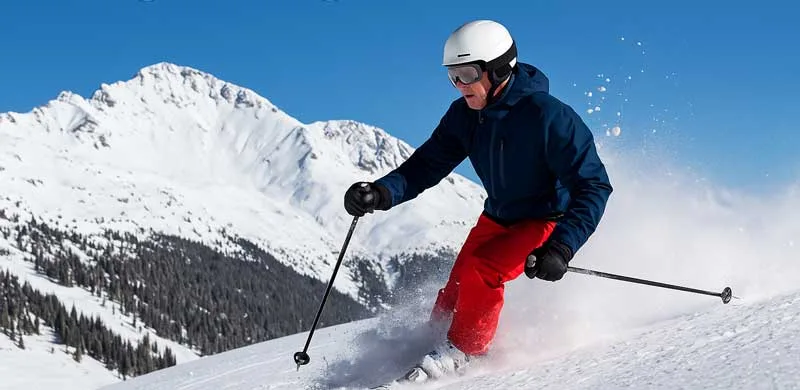At Ibex Ski & Adventure Club, we believe that adventure and responsibility go hand in hand. Whether you’ve been skiing for decades or you’re clipping into bindings for the very first time, awareness and preparation are what keep a good day from turning into a bad story. Safe skiing practices help you—and everyone else on the mountain—enjoy the sport to its fullest.
This page collects resources, reminders, and ski safety tips designed to keep our members confident and prepared.

Below are four safety videos we recommend every skier watch. Each highlights a critical aspect of alpine ski safety—from riding chairlifts to understanding mountain etiquette.
Riding chairlifts is part of every ski day. This video covers safe loading, riding, and unloading practices so you and your fellow skiers stay injury-free.
Produced by the Pacific Northwest Ski Areas Association, this video introduces the Responsibility Code and explains how simple choices can prevent accidents.
Learn from the experts at Telluride about mountain etiquette: staying in control, sharing the slopes responsibly, and respecting posted signs.
A broad refresher on safe skiing practices, covering control, awareness, and courtesy—valuable for both beginners and veterans.
The National Ski Areas Association (NSAA) Responsibility Code remains the foundation of ski safety. Here’s our Ibex-friendly version:
Know Your Limits – Ski within your ability. Pushing too far can end a great day early.
Stay in Control – If you can’t stop or avoid, you’re going too fast.
Look Out for Others – Yield when merging, check uphill before starting, and leave space on the slope.
Respect Signs & Terrain – Warnings, closed trails, and rope lines exist for good reason.
Gear Up Right – Helmets, tuned skis, and layered clothing all improve safety and performance.
Our club follows a few additional practices to keep trips safe and connected:
Trip Safety Briefings – Trip leaders share reminders and conditions before the first run.
Buddy System – Ski with at least one partner. It’s safer—and more fun.
Emergency Response – If an accident occurs, contact ski patrol immediately and avoid moving the injured person unless absolutely necessary.
Snow and weather change quickly. A few things to keep in mind:
Spring Skiing – Afternoon slush creates variable conditions. Expect ice patches and soft spots.
Cold Snaps – Watch for signs of frostbite and hypothermia. Layer smartly and take breaks indoors.
Low Visibility – Goggles with the right tint and skiing with a partner make a huge difference.
For those who want to go deeper, here are a few additional videos worth exploring:
Preventing Ski and Snowboard Injuries – Tips from a Doctor
On-Mountain Safety Rules Everyone Should Know About!
Ski smart. Stay safe. Help make every Ibex trip an adventure worth remembering. When you put safety first, everything else—the powder days, the chairlift laughs, your après ski experience becomes that much better.